Learn about each house on this historic street in Wheeling, West Virginia
This blog post leans heavily on several sources for information. You can learn more from the links at bottom of this page.
The Chapline Street Row Historic District is an incredible block of ornate, late Victorian-style homes built of brick between 1850 and 1896. In the following paragraphs, we will address each house in order, with details about who originally owned them and when they were built.
All of these homes are still occupied, and are mostly still intact as they originally appeared, a fact recognized by the National Register inventory form with this quote: “The current owners are to be congratulated for having recognized the importance of preserving their buildings. It is the lack of alterations which make them valuable aesthetically and financially. Although each building is important, it is the entire series which creates the most important block of high style Victorian buildings in West Virginia.”
Wikipedia called the Chapline Street Row Historic District an architectural “super block.”
Watch the Video
Be sure to take an extensive walk around Chapline Street with me as I make photographs and explore the wonders of this historic place.
Let’s meet the houses
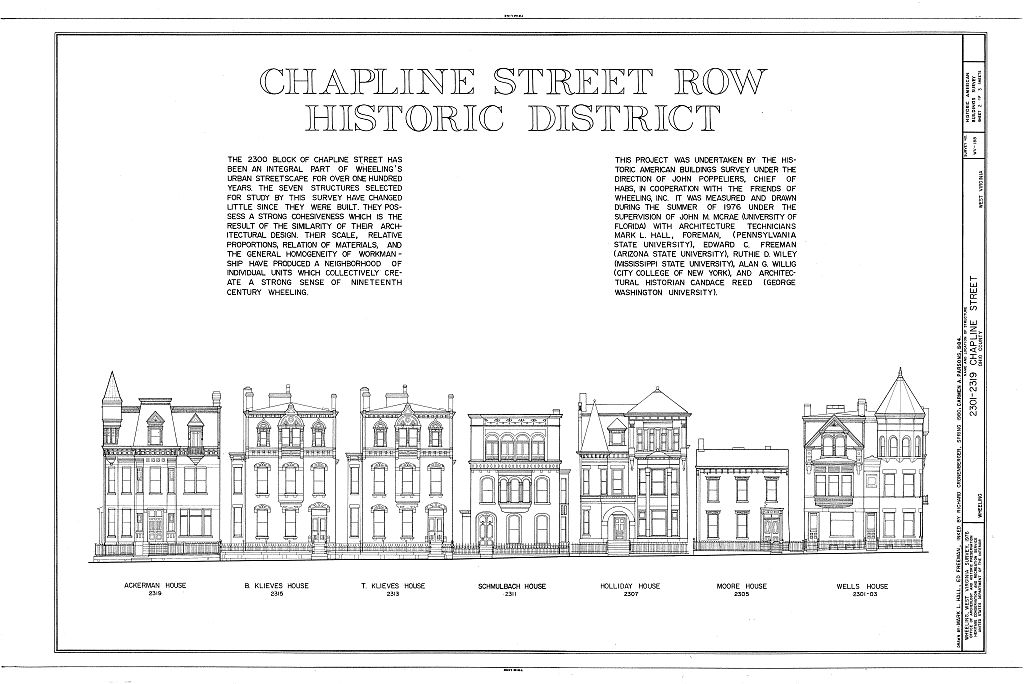

2301-2303 Chapline Street: The Wells House, 1889
The homes at 2301-2303 Chapline Street belonged to architect Edgar Wells. He acquired the property from Nancy Moore, who also owned the property next door. The house was built about 1889.
The National Register inventory form said, “Mr. Wells was born in Brooke County and studied drawing and civil engineering at Bethany College for six months. He moved to Wheeling in 1874 and soon was a journeyman with Klieves, Kraft & Co. He became a full partner and designed and took charge of the construction of many buildings. Along with those already listed with the Klieves homes information should be added a building at West Virginia University, Schmulbach brewery additions and St. Alphonsus Church.”
The Library of Congress said this house “reflects Wells’ fondness for rich decorative detailing and is an architecturally eclectic composition. Evidence indicates that this house was originally designed to be a two-family structure.”
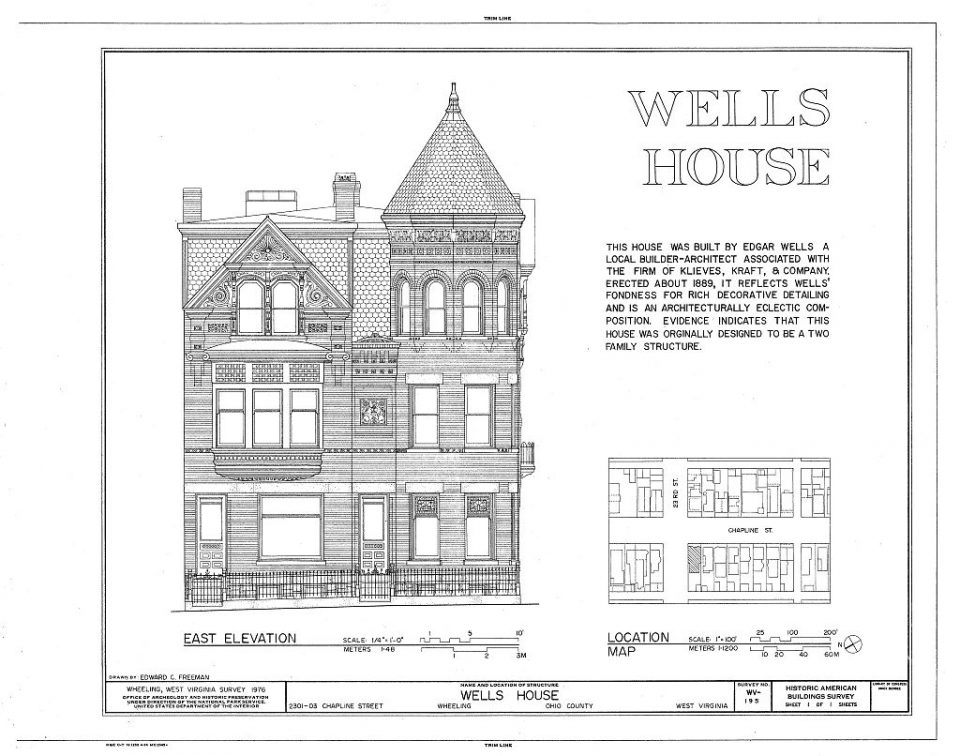
2305 Chapline Street: The Moore House, 1868
2305 Chapline Street was built in 1868 and it was owned by a woman named Nancy Moore. Not much is known about her but there was an engineer by the name of James W. Moore living in the house by 1879.

2307 Chapline Street: The Holliday House, 1868
John Holliday lived in the c.1868 home built for him at 2307 Chapline
Street. He was a partner in Armstrong, Holliday & Company which was the Keystone Planing Mill. The second building to the property was recorded in 1896 for Casper Schaefer.
In the City Directory for that year. Edward Schaefer stated that he would remove from his summer residence after October 1 to 2307 Chapline. Edward Schaefer was a partner with F.C. Driehorst. Their firm sold wholesale wines and liquors, and fine bottled goods for family and medicinal uses.
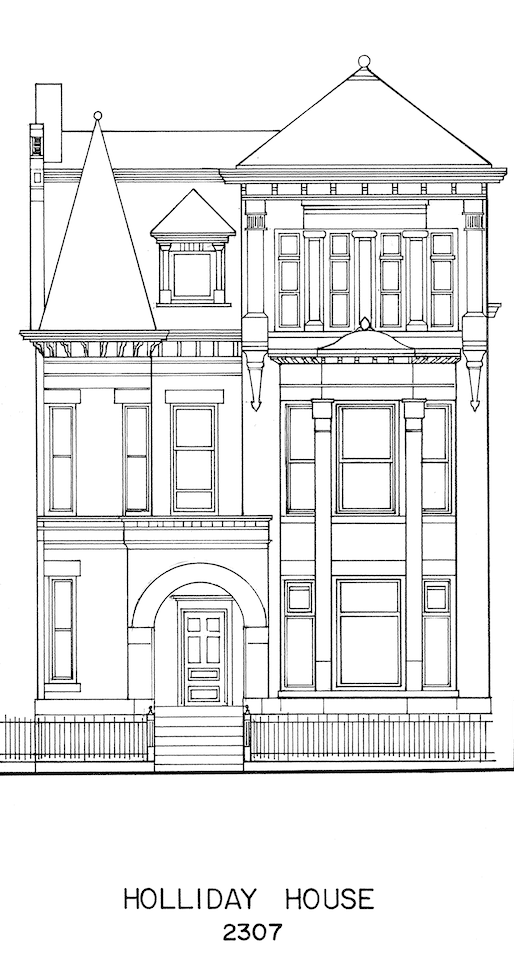
2311 Chapline Street: The Schmulbach House, 1868
Next we move on to 2311 Chapline Street, which was home to the street’s most famous character, Henry Schmulbach.
A building was constructed here in 1868 for a man named William Delbreggei, a carpenter. But as the National Register inventory sheet said, “it is Henry Schmulbach who has left his initials on the front doors and his accomplishments recorded in the history books.”
Schmulbach came to Wheeling from Germany at the age of 8 in 1844 with his parents.
In 1865 he quit his job in the grocery business and embarked in the wholesale liquor business.
In 1882, while living in this house, he formed the famous Schmulbach Brewing Company.
Henry Schmulbach became a very successful businessman with interests in banking, street railways, a telephone company, steel companies, steamboat companies, an amusement park, and the brewery. He built the Schmulbach building, the first sky-scraper in West Virginia which still stands today in downtown Wheeling.
Schmulbach also had a controversial personal life.
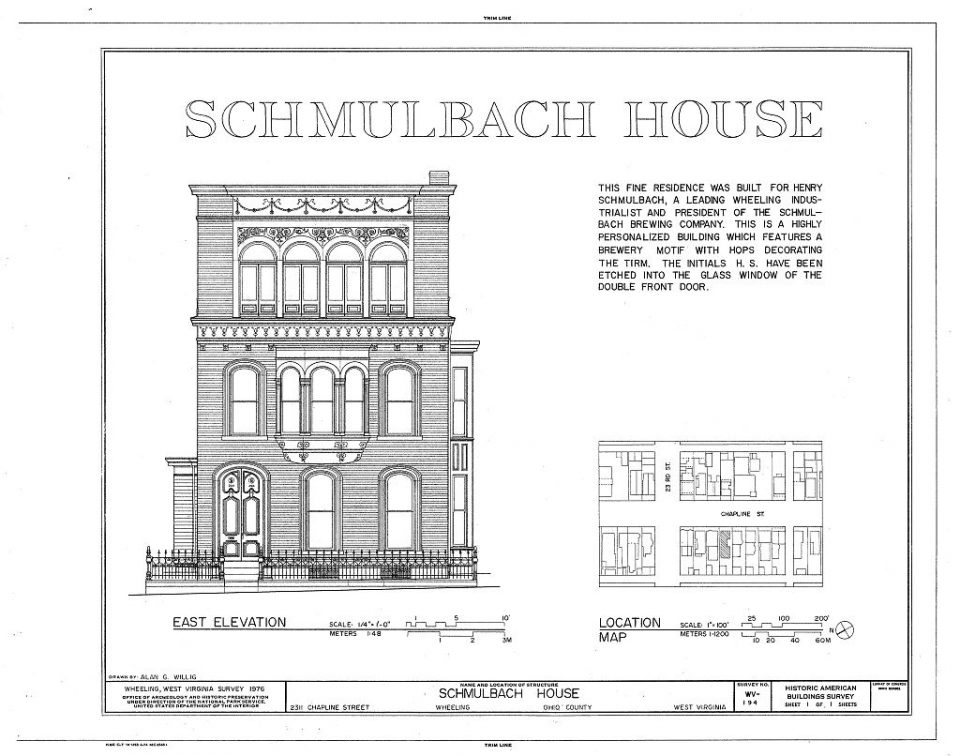
2313-2315 Chapline Street: The Klieves Brother’s Houses, 1885
Brothers Bernard and Theodore Klieves lived next door to each other in matching houses at 2313 and 2315 Chapline Street. Both houses were probably built about 1885.
The Klieves family immigrated to the United States in stages from 1846 until 1858, when 22-year-old Bernard arrived with his father and five other children. Bernard and Theodore, along with another brother named William, followed in the family business as cabinet-makers and carpenters.
In 1864 Bernard Klieves formed called Klieves, Kraft & Co. with partner Charles C. Kraft, which was joined later by William and Theodore. The company became quite successful, building some of the city’s top business blocks and mansions.
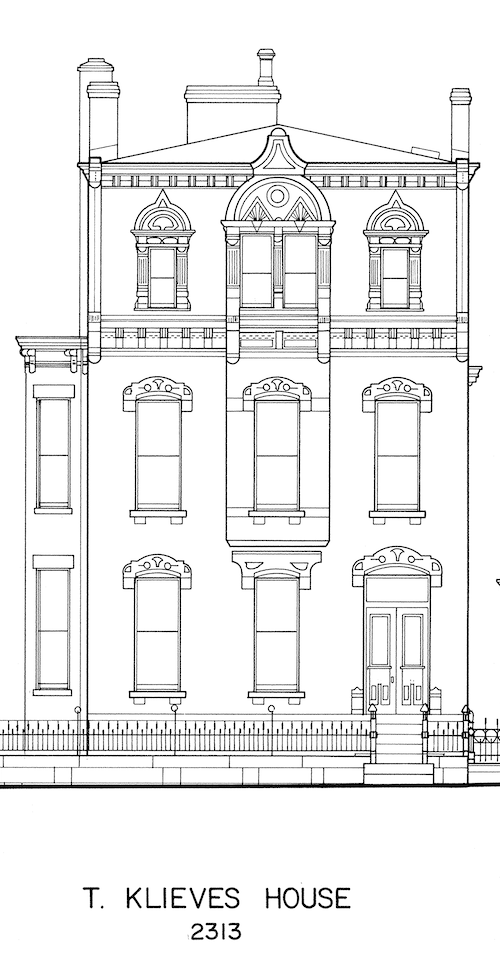
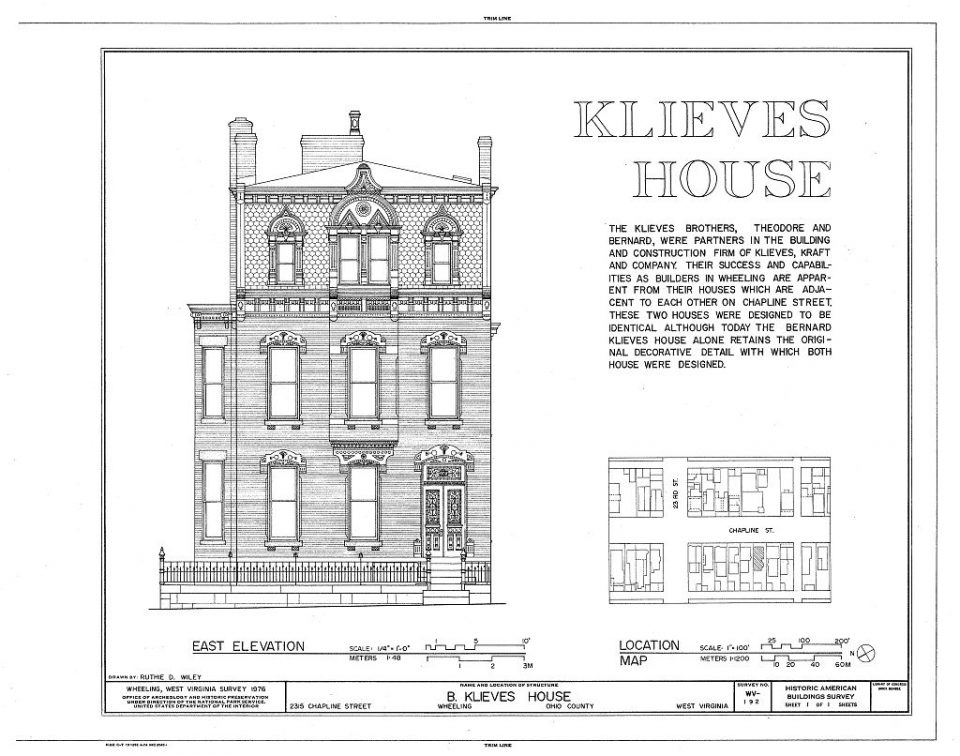
2319 Chapline Street: The Ackermann House, 1889
Gregor Ackermann, M.D., practiced medicine in his native Germany and then worked as a doctor
for a German steamship company. In 1880 he came to Wheeling. He got married and had a home built at 2319 Chapline Street in 1889. which also served as his office as a physician and surgeon.

2321-2323 Chapline Street: The Richards House, 1853
Henry S. Richards was a tailor and his house at 2321-2323 Chapline Street was built sometime around 1853. He worked with a man named Charles W. Seabright who bought the north half of the house in 1860.
Seabright came to Wheeling from Germany in 1849 at age 13 with his family. He was broke and had little education but for 21 years he worked for a merchant tailor until he saved enough money to start his own business. In 1881 Seabright was elected to the state legislature and in 1887 he was elected mayor of Wheeling.
Seabright’s real name was Carl W. Siebricht but he adopted an English translation of his name which was given by a Sunday school teacher.
More about Charles Seabright
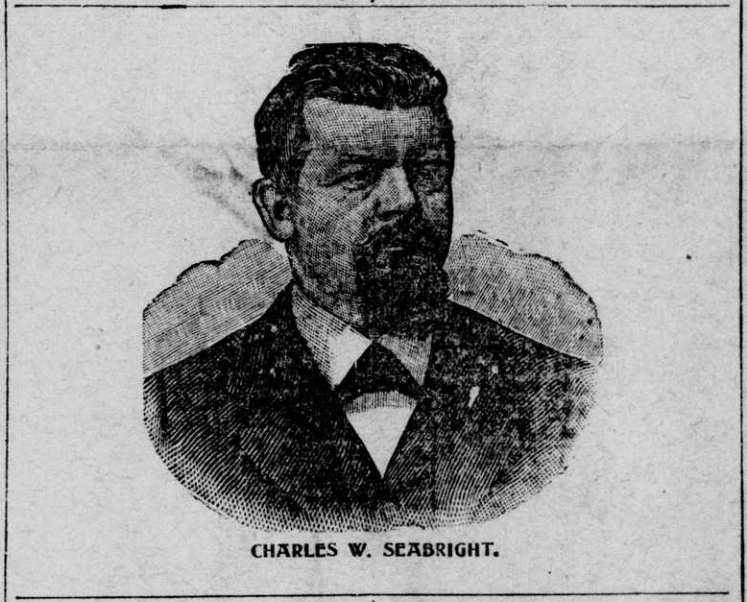
Upon his death in 1899, The Wheeling Register referred to Charles Seabright as the best known man in the city.
Charles Seabright (1836-1899) served in the German mail service prior to immigration. In America, he was employed as a tailor and later became a self-employed merchant, a popular politician, and a member of Wheeling Lodge 28, B.P.O.E. The Wheeling Register said this about Seabright, who for an unknown reason went by the nickname “The Commodore,” when he was a mayoral candidate, “In September of 1849 Mr. Seabright was engaged as an errand boy at the well known tailoring establishment of Mr. Thomas Hughes, and until he became able to take care of his mother he, with Mr. Thomas Hughes, made his home with the late Mrs. M.C. Leach, she being at that time financially interested in Mr. Hughes establishment.”
In 1861 Seabright married Isabel O’Callahan and they produced two sons and a daughter. Seabright worked for Hughes until 1871, when he opened his own tailor business in partnership with Charles Pfafenbach, under the firm name of Pfafenbach & Seabright, which employed up to 40 people. As an activist state legislator with the Democratic party, Seabright helped abolish the manufacturing of cigars by forced convict labor at the West Virginia State Penitentiary in nearby Moundsville, West Virginia. He also helped established the office of coal mine inspector. He was elected as mayor of Wheeling three times.
Wife Isabel died in 1877. When Seabright died in 1899, all of his children were already deceased except for son Edward, who was at his bedside when he passed. Seabright’s funeral was attended by the serving mayor, the city council, members of his Elks lodge, by a group called the German Pioneers, and by the Young Men’s Democratic Club.
Sources and Links
City of Wheeling website. “National Register of Historic Places Inventory — Nomination Form.”
Find-a-Grave. Charles William “C.W.” Seabright.
Library of Congress. “1. Title sheet – Chapline Street Row Historic District, 2301-2319 Chapline Street, Wheeling, Ohio County, WV Drawings from Survey HABS WV-188.”
The Wheeling Register. “Ex-Mayor Seabright Dead.” Thursday, August 17, 1899.
The Wheeling Register. “C.W. Seabright. A sketch of the Democratic candidate for mayor of the city.” Sunday, January 23, 1887.
Wikimedia. “Chapline Street Row Historic District, 2301-2319 Chapline Street, Wheeling, Ohio County, WV HABS WVA,35-WHEEL,9- (sheet 2 of 3).“
